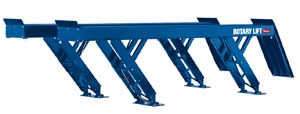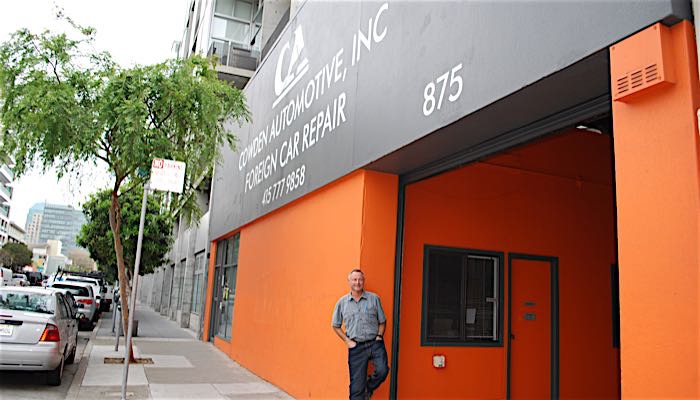 Rotary Lift’s award-winning Y-Lift is now available as a general service model (Y12) to improve productivity and profitability throughout the shop. The Y-Lift is a drive-on lift that uses a patented design and unique Y-shaped legs to provide faster rise/descent speeds and better vehicle access than traditional scissor or four-post lifts.
Rotary Lift’s award-winning Y-Lift is now available as a general service model (Y12) to improve productivity and profitability throughout the shop. The Y-Lift is a drive-on lift that uses a patented design and unique Y-shaped legs to provide faster rise/descent speeds and better vehicle access than traditional scissor or four-post lifts.
Rotary Lift introduced the Y-Lift alignment lift (model YA12) in February. The new Y12 flat top model offers all the productivity benefits of the alignment version for other service and repair applications including quick-service operations, undercarriage and exhaust work, and jobs requiring loaded suspensions. With the addition of optional air jacks, the Y-Lift can be used to improve productivity for most maintenance and repair tasks.
The Y-Lift’s novel weight-sensing control system maximizes rise speed based on the weight of the vehicle being lifted. For most vehicles, the rise time will be around 37 seconds, which is up to 50 percent faster than scissor and four-post lifts with the same 12,000-lb. capacity. The faster rise time means technicians using a Y-Lift can start servicing vehicles sooner. And when they’re done, the Y-Lift also offers speedier descent than other lifts, so technicians can move on to the next job more quickly.
“Nowhere is the adage ‘time is money’ more true than in the vehicle service bay,” says John Rylee, director of marketing for Rotary Lift. “By enabling technicians to get a vehicle positioned for service more quickly, the Y-Lift helps them work faster so they and the shop can make more money.”
The Y-Lift’s namesake legs eliminate the need for the restrictive scissor arms and corner posts common to other styles of lifts, so technicians have more room to work. In fact, the Y-Lift provides at least 20 percent more overall work space, or Yspace, than other lifts, as well as full vehicle access from side-to-side and front-to-rear.
The Y-Lift offers true vertical movement and a compact footprint that fits comfortably in smaller bays. It accommodates a full range of vehicles, from mini cars to full-size pick-ups. To further improve productivity, the Y-Lift can be ordered with an optional lighting kit to provide additional under-vehicle lighting, swing jacks to hold the vehicle off the runways, and extended ramps.
The Y-Lift is also available in a drive-through configuration to further speed vehicle positioning, especially in quick-service operations.
The Y-Lift incorporates a number of design features to provide overall durability. The hydraulic cylinder, locking mechanism and position sensor are all located inside the runways, to protect them from corrosives and physical damage. Preserving the integrity of these critical components reduces lift downtime.
The Y-Lift has been third-party tested by ETL and ALI certified to meet ANSI/ALI ALCTV-2006 safety standards. It can be flush-mounted or recessed. Capacity is 12,000 lbs. The Y-Lift is made in the U.S.A.
For more information about the Y-Lift, contact your local Rotary Lift distributor, log on to www.rotarylift.com or call (800) 640-5438. You can also find Rotary Lift on Facebook, www.facebook.com/RotaryLift; Twitter, http://twitter.com/RotaryLift; and YouTube, www.youtube.com/RotaryLiftMedia.

